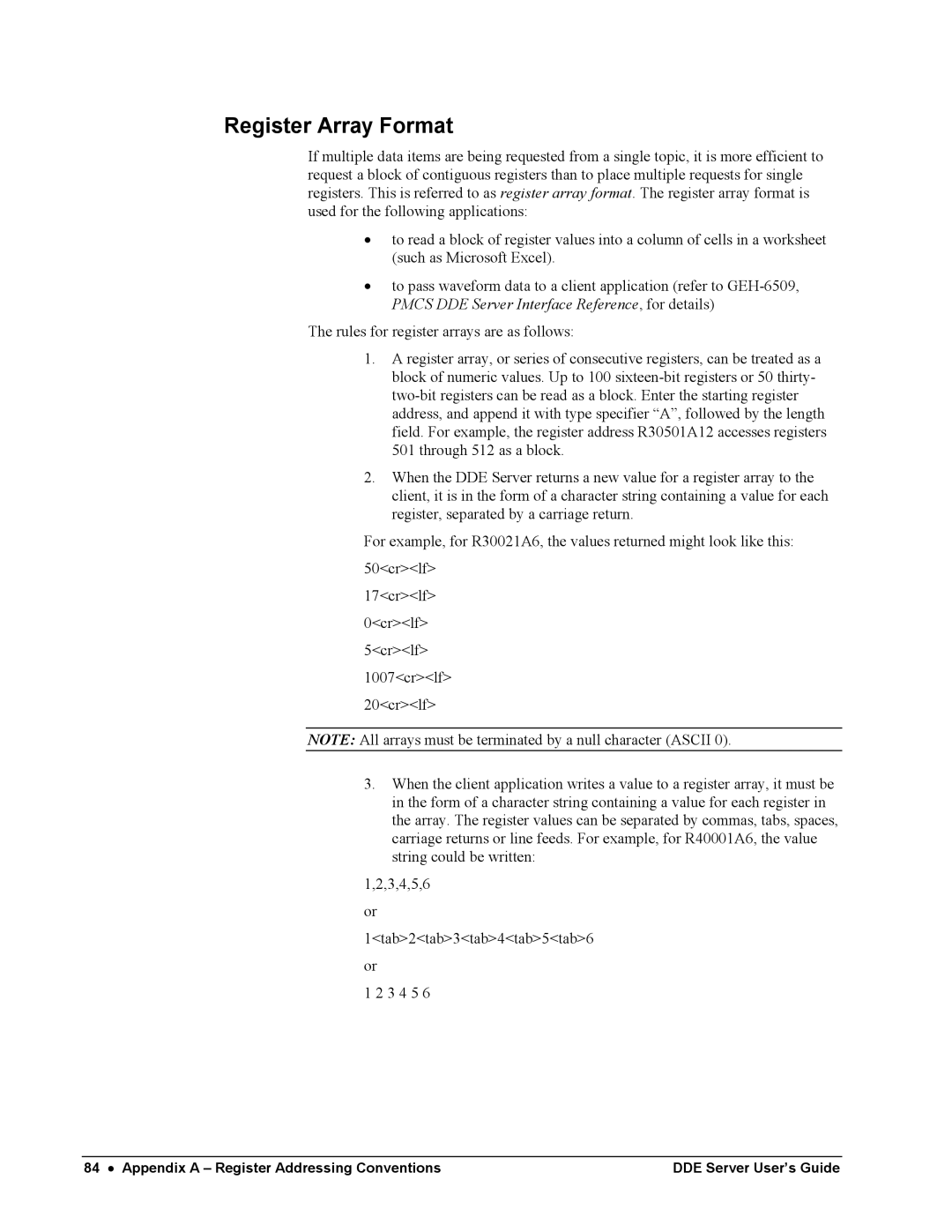Register Array Format
If multiple data items are being requested from a single topic, it is more efficient to request a block of contiguous registers than to place multiple requests for single registers. This is referred to as register array format. The register array format is used for the following applications:
•to read a block of register values into a column of cells in a worksheet (such as Microsoft Excel).
•to pass waveform data to a client application (refer to
The rules for register arrays are as follows:
1.A register array, or series of consecutive registers, can be treated as a block of numeric values. Up to 100
2.When the DDE Server returns a new value for a register array to the client, it is in the form of a character string containing a value for each register, separated by a carriage return.
For example, for R30021A6, the values returned might look like this: 50<cr><lf>
17<cr><lf>
0<cr><lf>
5<cr><lf>
1007<cr><lf>
20<cr><lf>
NOTE: All arrays must be terminated by a null character (ASCII 0).
3.When the client application writes a value to a register array, it must be in the form of a character string containing a value for each register in the array. The register values can be separated by commas, tabs, spaces, carriage returns or line feeds. For example, for R40001A6, the value string could be written:
1,2,3,4,5,6 or 1<tab>2<tab>3<tab>4<tab>5<tab>6 or
1 2 3 4 5 6
84 • Appendix A – Register Addressing Conventions | DDE Server User’s Guide |
